Best Safety Squat Bars to Buy in November 2025
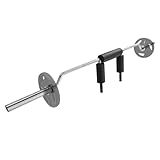
VEVOR Safety Squat Bar, 700 LBS Fitness Squat Bar, Safety Squat Bar Attachment with Shoulder and Arm Pads, 28mm Diameter Weight Bar, Ideal for Front Squats, Lunges, Rehab, Physical Therapy
- FITS MOST 4-SEATER CARTS: IDEAL FOR EZGO TXT AND SIMILAR CARTS.
- DURABLE & WEATHERPROOF: STANDS UP TO UV RAYS, RAIN, AND WEAR.
- SAFETY FIRST: REAR LIGHT VISIBILITY AND MIRROR OPENING ENHANCE PROTECTION.


![Safety Squat Bar [Bells of Steel] Safety Squat Barbell 4.0, Black Titanized Sleeve and Shaft Coating, Premium Padded Barbell Pad, 45.6lb, 1500lb Weight Capacity](https://cdn.fitprops.com/1/411_Isl_Ker_IL_SL_160_fe30bb7148.jpg)
Safety Squat Bar [Bells of Steel] Safety Squat Barbell 4.0, Black Titanized Sleeve and Shaft Coating, Premium Padded Barbell Pad, 45.6lb, 1500lb Weight Capacity
- DURABLE TITANIZED SHAFT & KNURLED HANDLES FOR LESS UPPER-BODY STRAIN.
- ERGONOMIC PADS FOR HANDS-FREE SQUATS, SIMPLIFYING LEG DAY WORKOUTS.
- VERSATILE DESIGN REPLACES MULTIPLE TOOLS FOR 10+ DIFFERENT EXERCISES.
![Safety Squat Bar [Bells of Steel] Safety Squat Barbell 4.0, Black Titanized Sleeve and Shaft Coating, Premium Padded Barbell Pad, 45.6lb, 1500lb Weight Capacity](https://cdn.flashpost.app/flashpost-banner/brands/amazon.png)
![Safety Squat Bar [Bells of Steel] Safety Squat Barbell 4.0, Black Titanized Sleeve and Shaft Coating, Premium Padded Barbell Pad, 45.6lb, 1500lb Weight Capacity](https://cdn.flashpost.app/flashpost-banner/brands/amazon_dark.png)

POWER GUIDANCE Barbell Squat Pad - Neck and Shoulder Protective Pad - Great for Squats, Lunges, Hip Thrusts, Weight Lifting and More
- INJURY PREVENTION: COMFORTABLY SQUAT HEAVIER WITHOUT NECK OR SHOULDER PAIN.
- SECURE FIT: ANTI-SLIP DESIGN KEEPS THE PAD IN PLACE DURING WORKOUTS.
- VERSATILE USE: IDEAL FOR SQUATS, LUNGES, AND HIP THRUSTS-TRAIN EFFECTIVELY!



E.T.ENERGIC 7FT Safety Squat Bar Load 700LBS, 2" Sleeve Olympic Barbell with Comfortable Neck Pad, ideal for Free Weights Strength Training
- DURABLE STEEL CONSTRUCTION: SUPPORTS 700LBS FOR LONG-LASTING USE.
- COMFORT NECK PAD: REDUCES STRAIN, ENABLING LONGER WORKOUT SESSIONS.
- KNURLED GRIP DESIGN: PREVENTS SLIPPAGE AND ENHANCES LIFTING STABILITY.


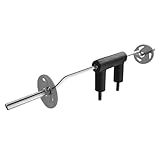
VEVOR Safety Squat Bar, 1,500 LBS Fitness Squat Bar, Safety Squat Bar Attachment with Shoulder and Arm Pads, 32mm Diameter Weight Bar, Ideal for Front Squats, Lunges, Rehab, Physical Therapy
- 2500 LBS CAPACITY: HEAVY-DUTY STEEL SUPPORTS INTENSE SQUAT SESSIONS!
- FULL-BODY ENGAGEMENT: VERSATILE FOR ALL MAJOR MUSCLE TRAINING NEEDS.
- COMPACT DESIGN: SAVE SPACE WHILE MAXIMIZING YOUR HOME WORKOUT!


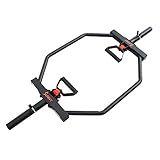
Sunny Health & Fitness Olympic Hex Barbell Trap Bar - OB-TRAP
- 400 LB MAX CAPACITY: PERFECT FOR INTENSE WORKOUTS AND HEAVY LIFTERS!
- COMFORTABLE GRIP: SWIVEL HANDLES ENHANCE LIFTING WITH OPTIMAL CONTROL.
- SECURE WEIGHT CLIPS: STAY FOCUSED ON YOUR FORM WITH STABLE, SECURE PLATES.



CAP Barbell Olympic Trap Bar, 500lbs, Alloy Steel, Black, 50x29x14 inches
- COMPACT DESIGN FITS ANY HOME GYM WHILE SUPPORTING 500 LBS OF WEIGHT.
- NEUTRAL GRIP ENHANCES COMFORT AND REDUCES BACK STRAIN DURING LIFTS.
- DURABLE STEEL CONSTRUCTION ENSURES STABILITY AND LONGEVITY FOR WORKOUTS.


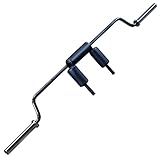
Body-Solid Safety Squat Bar - Specialty Barbell for Quad and Posterior Chain Training, with Comfortable Handgrips and Built-in Padding, 1000 lb. Weight Capacity, Compatible with 2" Olympic Plates
-
30+ YEARS OF INNOVATION: TRUST BODY SOLID FOR TOP-TIER FITNESS EQUIPMENT.
-
1000 LB CAPACITY: ACHIEVE NEW PRS SAFELY WITH MAX LOAD CAPACITY.
-
VERSATILE & COMFORTABLE: IDEAL FOR SQUATS, LUNGES, AND MORE-TRAIN SMART!


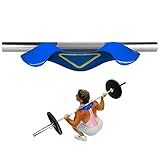
Original Manta Ray by Advanced Fitness, Squat Load Distribution Device
- PERFECT YOUR SQUAT TECHNIQUE WITHOUT DISCOMFORT OR INJURY.
- EVEN WEIGHT DISTRIBUTION REDUCES SHOULDER AND SPINE STRESS.
- EASY SNAP-ON DESIGN ENSURES STABILITY WITH EVERY SET.


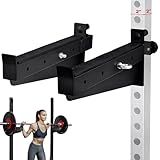
Yes4All Premium Barbell Safety Squat Bar Attachment - 1,000 LBS Capacity Squat Rack Spotter Arms 2x2 – Adjustable Height
- FITS MOST 2X2 POWER RACKS; CHECK DIMENSIONS BEFORE PURCHASE!
- SUPPORTS UP TO 1000 LBS FOR RELIABLE SAFETY DURING HEAVY LIFTS.
- DURABLE STEEL & UHMW PADDING FOR SECURE, NOISE-FREE WORKOUTS.


Safety squat bars are a popular piece of equipment in the fitness community, providing a safe and effective way to perform squats and other exercises. In this guide, we’ll explore the benefits of using safety squat bars, tips for choosing the right one, and how they compare to traditional squat bars.
What is a Safety Squat Bar?
A safety squat bar is a specialized weightlifting bar designed with built-in padding and handles that come down at a slight angle away from the body. This design helps distribute the weight more evenly, reducing strain on the shoulders, wrists, and elbows. The bar is particularly beneficial for those with shoulder injuries or limited mobility, allowing them to continue training without discomfort.
Benefits of Safety Squat Bars
-
Enhanced Stability: The padding and unique design of safety squat bars offer additional support and stability. This makes them ideal for beginners or those returning from injury.
-
Reduced Shoulder Stress: Traditional squat bars require significant shoulder mobility. In contrast, safety squat bars minimize shoulder and arm involvement, focusing more on the legs and core.
-
Versatility: Safety squat bars are not only for squats; they can be used for lunges, good mornings, and even upper body exercises, adding variety to your workout routine.
-
Improved Posture: The bar's design naturally encourages better posture, helping you maintain a strong and upright position throughout the exercise.
How to Choose the Right Safety Squat Bar
Choosing the right safety squat bar depends on several factors. Here’s what to consider:
-
Padding Quality: Good padding is crucial for comfort and injury prevention. Look for dense, high-quality foam that doesn't flatten over time.
-
Weight Capacity: Ensure the bar can accommodate your lifting needs. Check the maximum load capacity before purchasing.
-
Bar Length and Diameter: Choose a length and diameter that are compatible with your squat rack or stands. For information on compatible racks, see this guide on folding squat racks.
-
Handle Design: Handles should be comfortable and easy to grip. Consider whether you prefer straight or angled handles, as this can affect the bar’s feel during lifts.
-
Material and Finish: High-quality materials such as stainless steel are durable and rust-resistant. A good finish will enhance grip and prolong the bar's lifespan.
Using Safety Squat Bars Effectively
To fully benefit from a safety squat bar, focus on maintaining good form:
- Setup: Position the bar evenly across your traps with the handles angled forward.
- Foot Placement: Stand with your feet shoulder-width apart, toes slightly turned out.
- Engage Core: Tighten your core muscles to stabilize your spine during the lift.
- Control: Descend slowly, keeping your chest upright and knees aligned with your feet.
Safety squat bars can help improve your overall strength and fitness, making them an excellent addition to any home gym setup. Remember, choosing the right bar is a personal decision based on your unique needs and fitness goals. For more information on setting up your home gym, consider reading about folding squat racks that complement safety squat bars perfectly.
By incorporating safety squat bars into your routine, you can enjoy a safer, more supportive lifting experience that enhances your strength training efforts.
